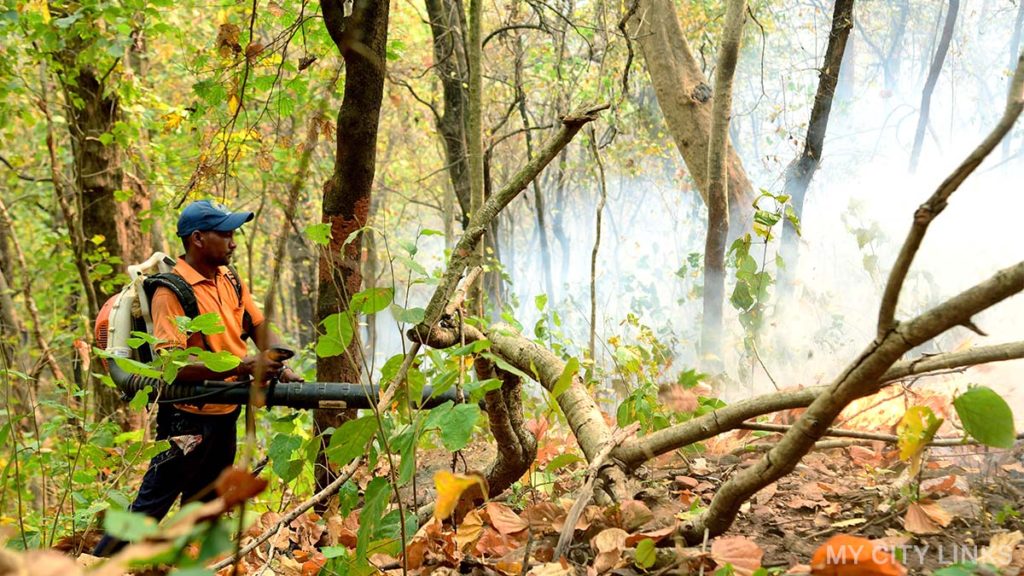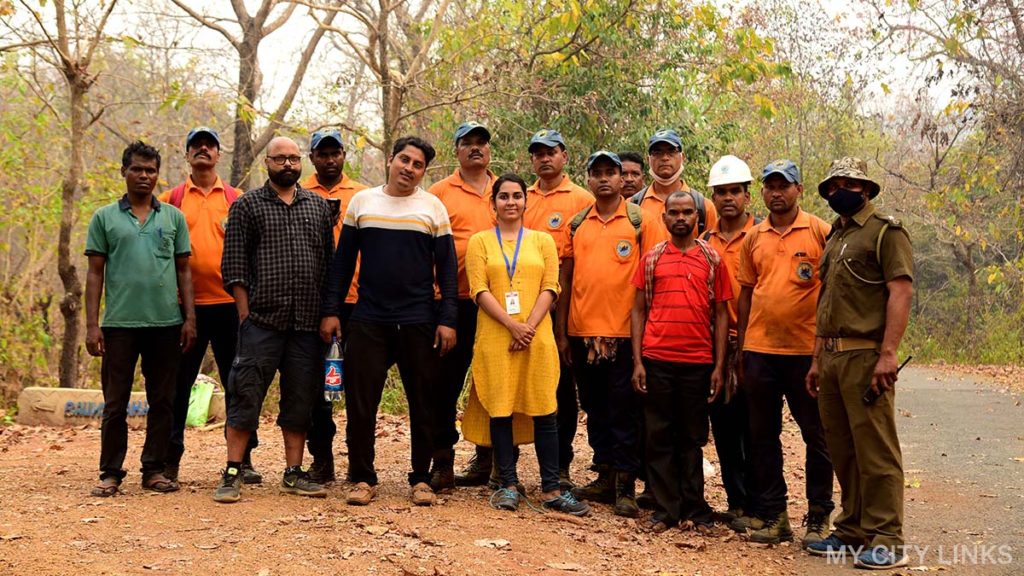Saving Similipal: Fire Facts From Ground Zero
Similipal National Park in Odisha is burning. The fire has not only affected the people, animals and vegetation around the biodiversity hotspot, but also triggered a burning controversy in the state. The lack of attention by the mainstream media has forced the affected residents of Mayurbhanj district, bloggers and social media influencers to highlight the disaster in the national consciousness.Besides, reality often gets distorted on the internet and this is happening with the Similipal forest fires as well.
To know what the real situation at ground zero is, a My City Links team went inside the National Park.

Ground Zero
While the fire began more than two weeks ago and has ravaged many parts of the forest, personnel from the forest and fire departments and others have managed to bring the blaze under control to a great extent in the last few days. While the effort continues on war footing to douse the fires, the Odisha Disaster Rapid Action Force (ODRAF) has joined the fight now.
On March 9 the Odisha government decided to deploy ODRAF to douse the fires in Similipal, which is the world’s second largest biosphere reserve. The ODRAF teams have been doing a commendable job since then, working tirelessly to bring the situation under control.
Informing about the current situation, Satyabrat Mohapatra, Forester (Rangamatia Range), said, “More than 80% of the fire is under control now and we are trying our best to douse the remaining fires as soon as possible. Today we have received information about fires in four sections of Rangamatia Range. We are going there to subdue the blazes.”

Mohapatra further said that the four affected sections have been assigned to four teams. “Two groups have already reached their grid locations. The other two reached their allocated grids some time back to bring the situation under control,” he added.
On the fire-fighting equipment being used, the forest official said, “Our teams are equipped with powerful leaf blowers which are useful in these situations.”
Fortunately, there is very low probability of animals being killed in the fire. “We have not found any evidence in the form of carcasses yet. Plants and trees have faced the brunt of the fire, but it is not as bad as it is hyped in the news and social media,” he added.
Lack Of Awareness
The ignorance of the locals is a major reason behind the forest fires. One of the major sources of income of the locals is the flowers and fruits of the mahula and kusuma trees, from which they make refreshing drinks and oils and sell them to earn their living. They set the dry leaves on fire to ease the process of collecting the flowers. But unfortunately, they do not know why they should put off the fire and not let it go out of control.

In the last few days, the government has been arranging meetings with the locals to educate them about forest fires and how important it is to keep them from spreading, but it is still to become a part of the everyday practice.
The ODRAF teams have been very helpful and have increased the speed of the fire-fighting process which has resulted in bringing the situation under control much faster.”
Satellite Tracking
Talking about how information is collected and disseminated, Arun Kumar Mohanta of ODRAF informed, “The Forest Department receives satellite information, which is based on heat mapping. A place showing an unusually high temperature indicates fire. This information is released twice a day, once at midnight and another at noon. As per the information, our teams are instructed and we immediately get prepared to move. The technical team zeroes down the exact location and our team is accordingly deployed with all the necessary details and equipment.

“Since these fires are atop mountains with steep inclinations, it is not possible to carry water, sand or fire extinguishers to douse the flames. So we are equipped with leaf blowers. These blowers do not douse the fire, but they are used to remove dry leaves, twigs and branches from getting in contact with the fire. This way, the fire has nothing to feed on and dies out when everything in contact is reduced to ashes. This technique needs to be taught to the villagers so that the fire can be prevented from spreading,” Mohanta added.
Another ODRAF official, Sushant Mohanta, complained that various media outlets post “sensationalist stories” and these negatively affect the work of fire fighters.
“The hype in the news and social media creates unnecessary pressure on us. As a result, the public accuse us of not performing our duties honestly. This is not true. We work tirelessly and very promptly during any calamity. Forest fires are common here, but this year it has been politicized, which has also created a bad reputation for us,” the official said.

Rain Relief
On March 10, a short spell of rain brought some relief as it was expected to reduce the fires at many places.
The IMD has predicted more rains and thunderstorms till March 14 owing to a cyclonic circulation over Jharkhand and another one over southeast Madhya Pradesh.
This “divine intervention”, if we may call it so, must force us to contemplate that we are destroying the world faster than ever. We cause irreversible climate change and rely on such freak weather events to save us.

It is high time to change this attitude and not only protect Similipal, but the entire world.
(With inputs from Afreen Firdaus, Debi Prasad Sahu and Jyoti Prakash Sahoo )

Author: MCL bureau
We are the core team of MyCityLinks. A team of dedicated persons to create some out of the box content
Read more from author

